
Imagine a beautiful ocean where will be filled with plastic.
‘A Plastic Coral Ecosystem: 2019 Green Survival Campaign’ is a beautiful infographic expressing the plastic waste that we littered as if it is the coral reef. The ironic execution of this infographic was not to pursue the visual aesthetic, but to allow it to give awareness to the viewer. In each beautiful plastic coral holds an important message and dense information. The waste that we produce everyday from plastic bottles, styrofoam, pipes, bowls, plastic bags, etc., are floating around somewhere in the ocean for a long duration of time. The future ocean might look marvelous from far away, but it’ll be filled with plastic debris. Furthermore, the plastic ocean will not contain any real coral but there will be resided by plastic waste coral reefs. Provided that we do not find a solution, there will be no option but to accept the irrevocable “Plastic Coral Ecosystem.”
This infographic is enclosed in a package including 4 graphic posters and 1 volume of the Plastic Coral book.


The Beautiful Oceans of The Green Survival Era
Due to our habits of thoughtlessly wasting and not recycling plastic, the future that we will soon face is consisted of oceans that are filled with these plastic wastes. All of the world’s coral will perish and will be replaced by the beautiful plastic waste. Therefore, with this future of the horrible plastic coral reefs, I will introduce this idea called “A Plastic Coal Ecosystem Campaign” through an infographic.
As it is known as the nest and ecosystem of the living things in the ocean, the coal reef is deteriorating due to the plastic waste thrown into the ocean. The plastic waste floating around the ocean blocks the coal from getting the nutrition ultimately whitening the wonderful colors to its death. However, it’s alright. We will have the beautiful yet awful plastic coal reef that was produced as a result of us wasting, overspending and carelessly disposing plastic.



The Plastic Coral Reef
Based on the characteristics, usage and classification of plastic, it was divided into 7 types of plastic. Out of these, the 5 most used types of plastic (PET<PS<PVC<PP<PE) were selected and expressed graphically with a visual metaphor of a beautiful coral. Also the graphical measurements of the output, amount of recycling and the recycling ratio produced by the South Korean ERP system from 2010 to 2016 were used as the foundation of the graphics.






The 2019 Keyword Green Survival Era and the Continuous Increase of Plastic Waste
In the Green Survival Era where the green-eco movement is not only good, but crucial for our survival. The use and waste of plastic is quite common in our everyday lives. From the year 1950 to 2019, the amount of plastic waste has increased geometrically. These plastic wastes are being recycled, buried and incinerated. However the majority of the plastic waste are not being recycled, but rather being buried into the ocean floors. Moreover, the plastic waste being buried into our nature will “without a doubt” contribute to the biggest change in our future. The people are well aware of the severity of this problem. Nonetheless, the idea of the plastic waste we created floating and sunken in the ocean is a vague notion. This is a huge mistake. From now on, we need to think more seriously. For that reason, I would like to make awareness of this problems through ‘A Plastic Coral Ecosystem: 2019 Green Survival Campaign.’
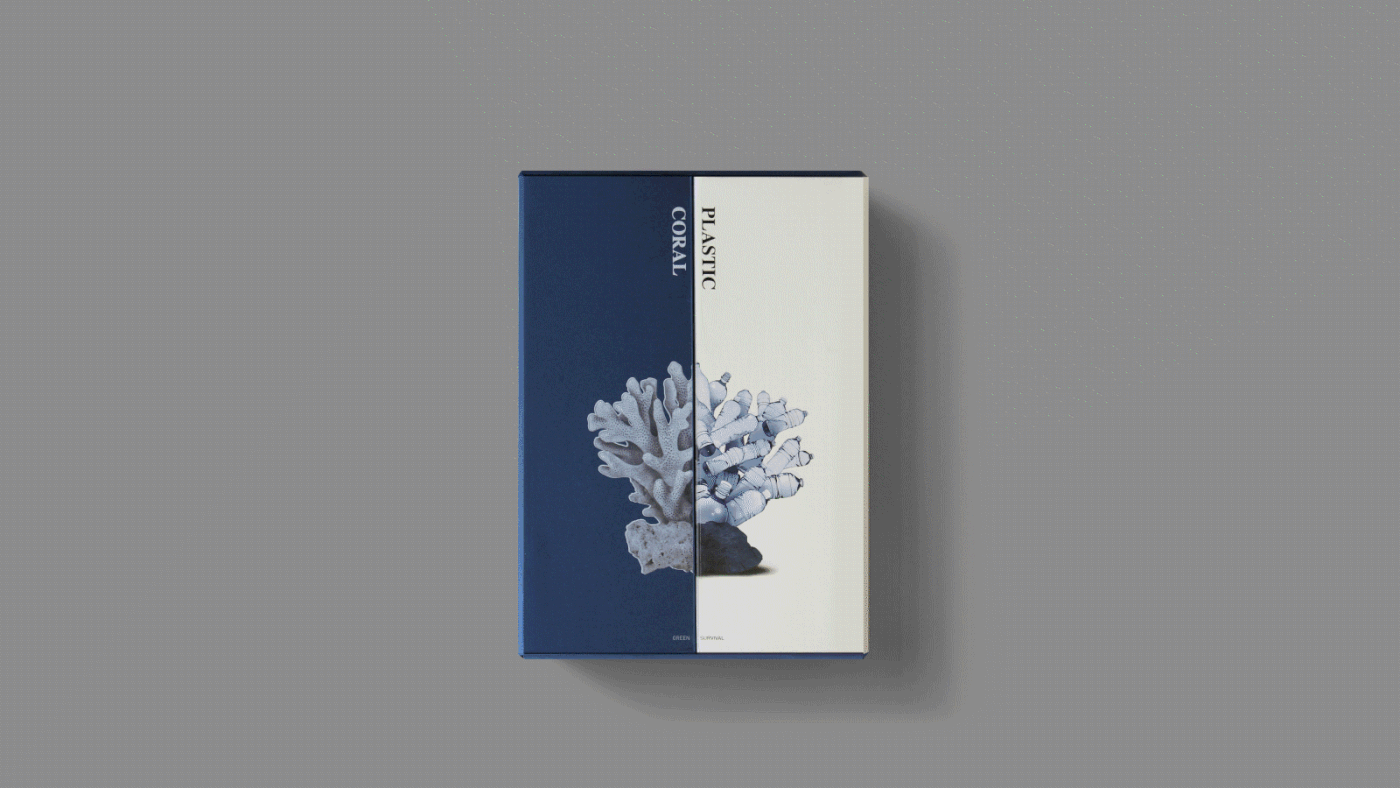





The Plastic Ocean of South Korea
The output of South Korea’s plastic output from 1965 to 2016 has been metaphorically expressed through the deepening of the plastic ocean. With the economic growth of South Korea in 1980, the output of plastic waste was also drastically increased.

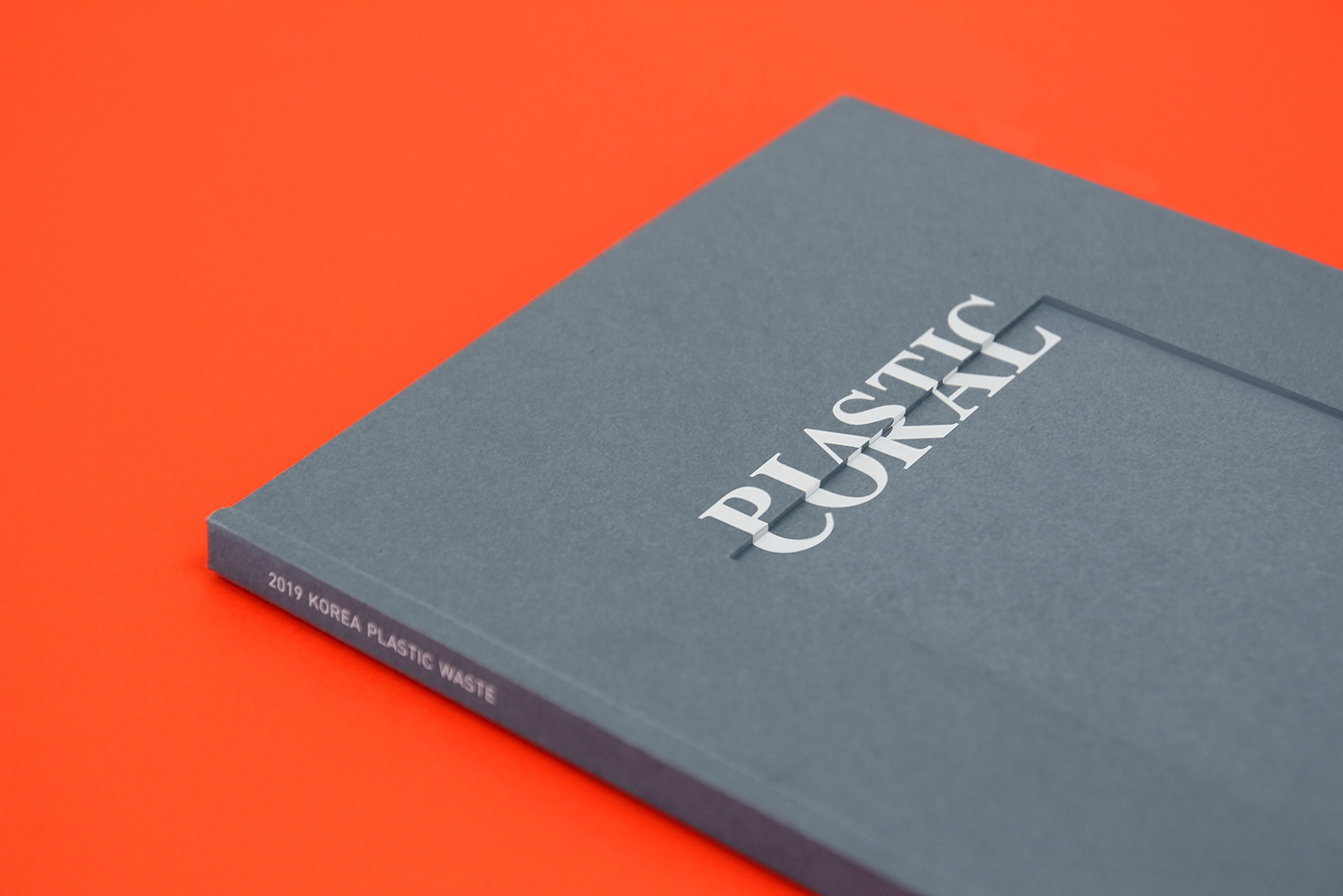





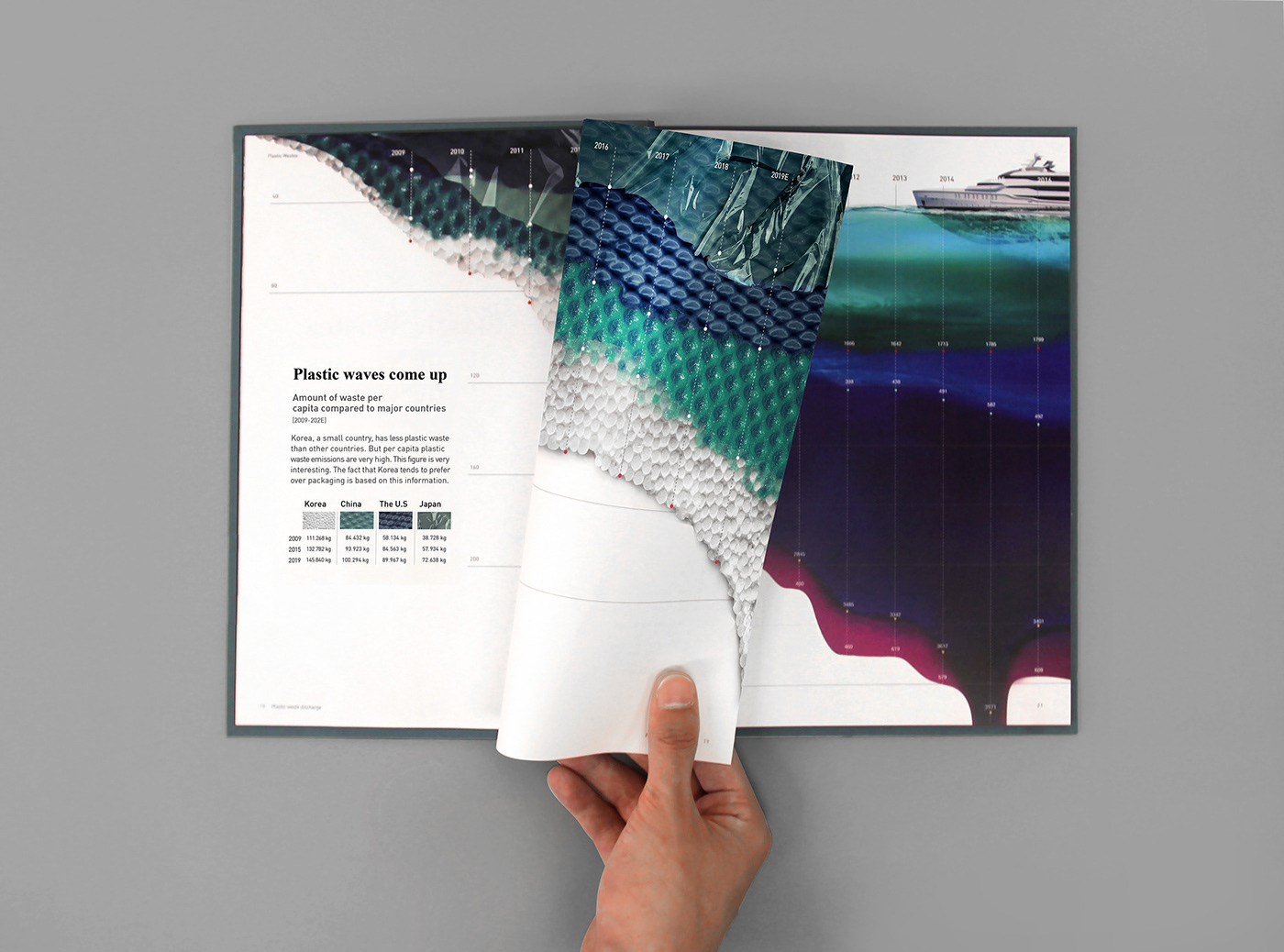
The Surge of the Plastic Wave
The information of a single person’s plastic waste output since 2009 to 2019 from the world’s leading countries has been expressed metaphorically as a surge of plastic waves. Out of all the major countries, South Korea has the lowest number of producing plastic waste, however it was clear that the consumption weight per person was the greatest. This was due to South Korea’s cultural tendency of over-packaging most products.



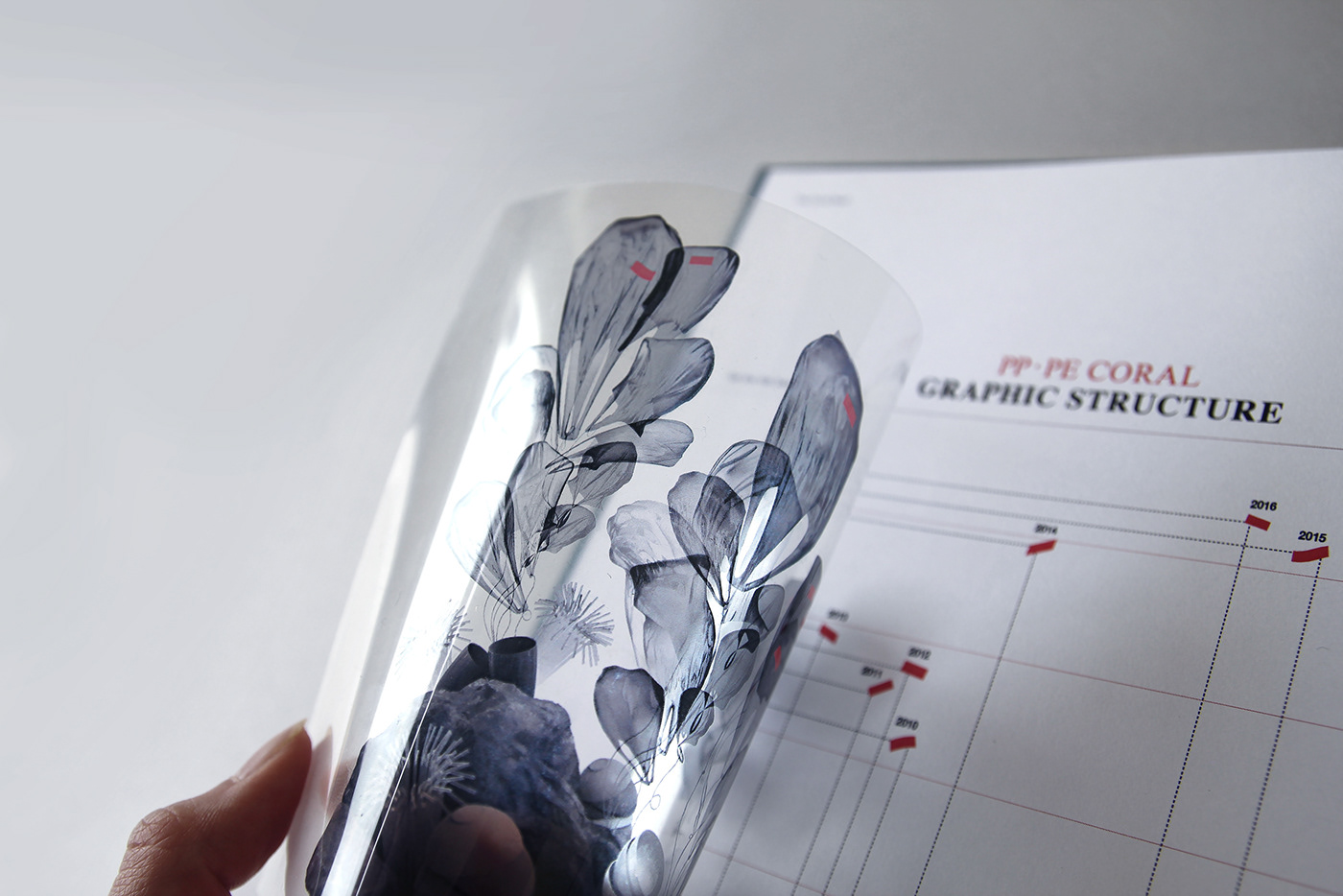
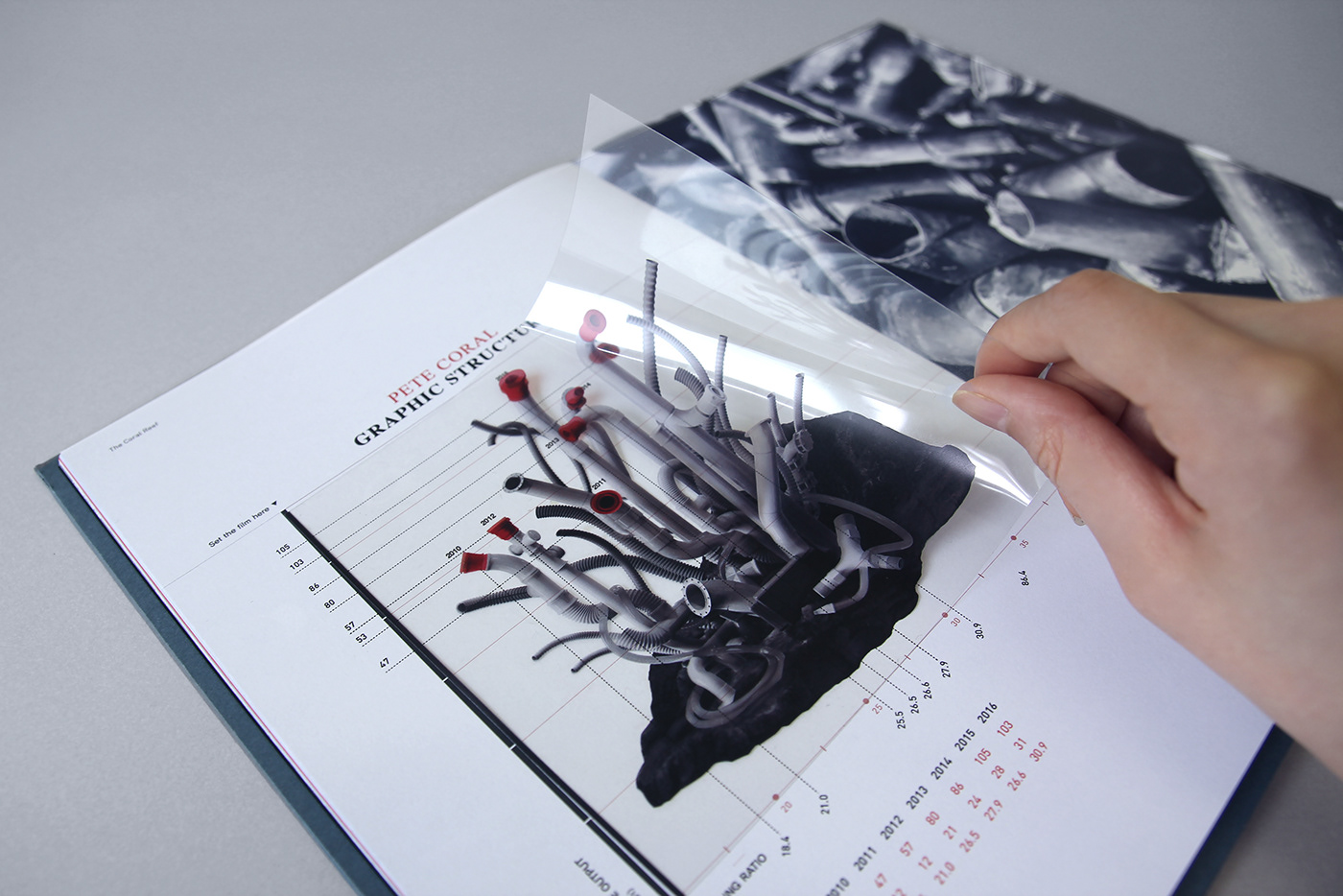
With the help of this campaign, it will present the future of the plastic waste ecosystem ahead of us and hopefully help others to consider this problem in a much more sternly manner. Additionally, I hope for it to reach numerous people so that they can think once more about the plastic waste they are producing and work towards protecting the environment. Thank you.








